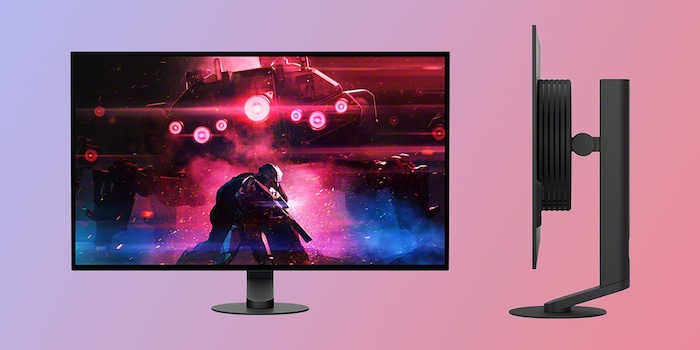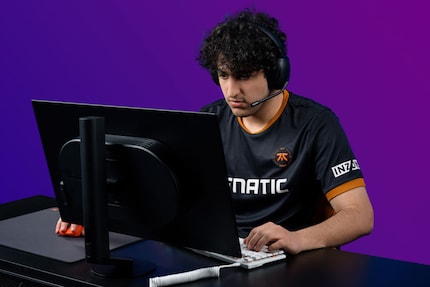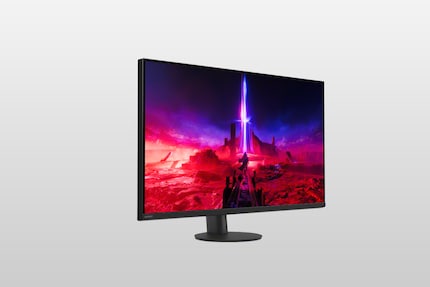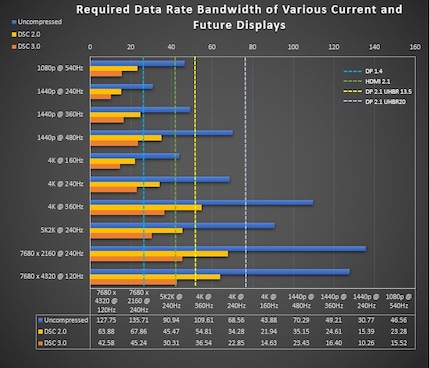

Sony presents two new gaming monitors
The Sony Inzone M10S with 480 hertz and special picture modes is aimed at professional e-sports enthusiasts. The less expensive Inzone M9 II is a mini LED monitor with 4K resolution.
Monitors from Sony are rare. The Japanese manufacturer is now launching two new models on the market. One of them is specifically designed for professional e-sports, while the other is aimed more at the gaming masses. Both are not exactly cheap, but are likely to find their niche.
Inzone M10S: 27 inch, OLED, 1440p, 480 Hertz
Sony's new flagship is the 27-inch Inzone M10S. It has LG's new WOLED panel with a resolution of 2560 × 1440 pixels and a frame rate of 480 hertz. This makes it perfect for fast-paced games such as competitive shooters. The Sony Inzone M10S costs 1299 francs and will be available from October.

According to Sony, the peak brightness in the three per cent window is 1300 nits, a very high value. The colour space coverage of 98.5 per cent DCI-P3 is also good. Sony has also opted for a simple design with a very compact stand. This is less in the way than the tripods of other screens. Nevertheless, it makes a stable impression when I shake it during the live presentation.

Source: Sony
There are two HDMI 2.1 connections and one DisplayPort 2.1, although the latter only supports UHBR10. This is not sufficient for uncompressed 1440p at 480 hertz. The signal has to be compressed using DSC - just like with DisplayPort 1.4. This is not a bad thing, but it makes the new connection superfluous. This makes it look like a marketing gimmick, which presumably drives up the costs due to the controller required.
The price at launch is slightly higher than the competitor model with the same panel, the Asus PG27AQDP. In return, Sony has given the Inzone M10S a few extra tricks that were developed together with the e-sports team "Fnatic": Firstly, the monitor has a 24.5-inch mode. Many professional gamers prefer the smaller diagonal in order to have a better overview of the entire image. The image section can be positioned either in the centre or at the bottom of the screen.
Secondly, the Inzone M10S comes with several picture modes that have supposedly been specially developed for e-sports. The "FPS Pro+ Mode" is supposed to ensure optimum contrast in "Valorant", for example, so that you can recognise opponents more clearly and earlier. The "FPS Pro Mode", on the other hand, simulates the familiar image look of classic LCDs.
Inzone M9 II: 27 inch, mini LED, 4K, 160 hertz
Sony has also unveiled the successor to the Inzone M9. The Inzone M9 II costs 949 francs and will also be available from October. The new version continues to rely on an IPS panel with UHD resolution and mini LED backlight. It features full array local dimming. However, this is rather coarse-meshed with only 96 zones.
The maximum brightness is 750 nits. This value should also apply to a 100 per cent window, as the luminosity of LED monitors does not normally depend on the average picture level (APL). The colour space coverage is 95 per cent of DCI-P3.

Source: Sony
With a frame rate of 160 hertz and a response time of one millisecond (grey to grey), the Inzone M9 II is not aimed at you if you mainly play shooters. However, it is well suited to other genres such as role-playing games, also thanks to its high pixel density of 163 pixels per inch.
The connections (1 × DP 2.1 UHBR10, 2 × HDMI 2.1) and the design of the Inzone M9 II are modelled on its more expensive brother. It is also finished in plain black plastic with a round stand. Both monitors can be tilted, swivelled and rotated 360 degrees.
My fingerprint often changes so drastically that my MacBook doesn't recognise it anymore. The reason? If I'm not clinging to a monitor or camera, I'm probably clinging to a rockface by the tips of my fingers.
From the latest iPhone to the return of 80s fashion. The editorial team will help you make sense of it all.
Show all

